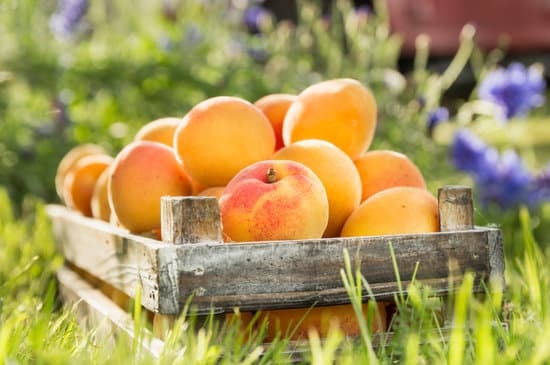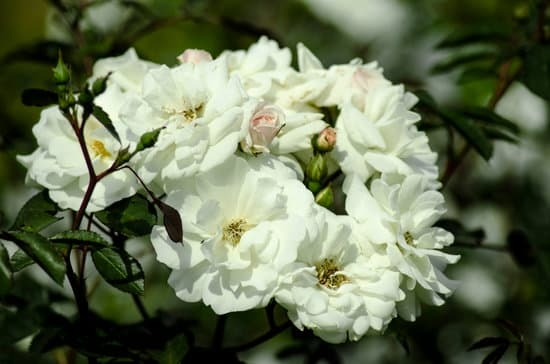Gardening at home is a popular and rewarding activity all over the world, including in India. From small urban apartments to spacious rural homes, individuals across the country are embracing the idea of creating their own green oasis.
Whether it’s growing herbs on a windowsill or cultivating a vibrant outdoor garden, there are endless possibilities for gardening enthusiasts. In this article, we will explore various gardening ideas that can be implemented in Indian homes, from choosing suitable plants for indoor spaces to dealing with common gardening challenges.
One of the key benefits of gardening at home in India is the opportunity to connect with nature and create a peaceful sanctuary right within your living space. Not only does gardening add beauty and aesthetic appeal to your surroundings, but it also has numerous health benefits.
Tending to plants can reduce stress, improve air quality, and provide a sense of accomplishment and satisfaction. Additionally, growing your own fruits, vegetables, and herbs can lead to healthier eating habits and reduce dependency on store-bought produce.
When it comes to choosing plants for indoor gardening in India, it’s essential to consider factors such as sunlight exposure, temperature fluctuations, and space constraints. Some popular options for indoor plants include succulents, spider plants, pothos, and money plants. These low-maintenance varieties thrive in indoor environments and require minimal care.
By strategically placing these plants near windows or under artificial lighting sources, you can create a lush green corner even in the smallest of spaces. Stay tuned as we delve into more specific tips and DIY projects tailored for Indian homes looking to embark on their gardening journey.
Benefits of Gardening at Home in India
Gardening at home in India offers a wide range of benefits, both for the environment and for the well-being of individuals. One of the primary advantages is the opportunity to grow your own fresh produce, which can lead to a more sustainable lifestyle. By cultivating fruits, vegetables, and herbs at home, individuals can reduce their dependence on store-bought goods and have a direct impact on their food supply chain.
In addition to promoting sustainability, gardening at home in India also provides a multitude of health benefits. Engaging in gardening activities can serve as a form of physical exercise, aiding in maintaining flexibility and strength. Furthermore, spending time outdoors in the sun while tending to plants can boost Vitamin D levels and improve overall mental well-being. The act of nurturing plants and watching them grow can be incredibly therapeutic and stress-relieving.
Moreover, gardening at home in India contributes to environmental conservation by providing green spaces that support biodiversity. Growing native plants can attract pollinators like bees and butterflies, thereby helping maintain ecological balance. It also reduces carbon footprint by minimizing the transportation required for obtaining produce. Overall, incorporating gardening ideas at home in India has numerous positive effects on personal health, community connectivity, and environmental sustainability.
| Benefit | Description |
|---|---|
| Sustainability | Gardening at home reduces dependence on store-bought goods. |
| Health Benefits | Gardening serves as physical exercise and improves mental well-being. |
| Environmental Conservation | Gardening provides green spaces that support biodiversity. |
Suitable Plants for Indoor Gardening in India
Indoor gardening is a popular trend among urban dwellers in India, as it allows individuals to bring nature into their homes despite space constraints. Whether you live in a small apartment or a sprawling house, there are plenty of suitable plants for indoor gardening in India that can thrive in different environments. Here are some plants that are ideal for indoor gardening enthusiasts looking to add a touch of greenery to their living spaces:
- Spider Plant: Known for its air-purifying properties, the Spider Plant is easy to care for and can survive in low light conditions.
- Syngonium: This versatile plant comes in various colors and patterns, making it a popular choice for indoor decoration. It thrives in indirect sunlight.
- Pothos: Pothos plants are hardy and can adapt to different light levels, making them perfect for beginners. They also help purify the air by removing toxins.
In addition to these common choices, herbs like mint, coriander, and basil can also be grown indoors providing fresh ingredients for cooking while adding a pleasant aroma to your home. By choosing the right plants based on your living conditions, you can create a thriving indoor garden that brings nature into your everyday life.
It’s important to consider factors such as light availability, humidity levels, and temperature when selecting plants for indoor gardening in India. Proper care and regular maintenance will ensure that your indoor garden flourishes and enhances the aesthetics of your home.
With these suitable plant options at hand, anyone can cultivate their green thumb and enjoy the benefits of gardening without needing a large outdoor space. Experimenting with different plant varieties adds an element of creativity and personalization to your indoor oasis.
Tips for Creating a Small Garden in Indian Urban Apartments
Creating a small garden in Indian urban apartments can be a rewarding and enjoyable experience for those looking to bring the beauty of nature into their homes. With limited space, it is important to make the most of the area you have available. Here are some tips to help you create a thriving mini garden in your urban Indian apartment:
- Choose the right plants: Opt for plants that thrive indoors and do not require a lot of natural light. Some suitable options include snake plants, spider plants, peace lilies, and pothos.
- Utilize vertical space: Make use of hanging planters, wall-mounted shelves, or vertical gardens to maximize space in your small apartment. This allows you to add more greenery without taking up valuable floor space.
- Use containers creatively: Get creative with the containers you use for your plants. Recycle old cans, bottles, or jars to add a unique touch to your garden while also reducing waste. Be sure to provide proper drainage holes in your containers to prevent overwatering.
With these tips and some creativity, anyone can transform their urban Indian apartment into a lush green oasis. Gardening at home in India is not only a great way to beautify your living space but also provides numerous health benefits such as improved air quality and stress reduction. So roll up your sleeves, grab some potting soil and seeds, and start creating your own indoor garden paradise today.
DIY Gardening Projects for Indian Homes
Gardening is a popular hobby among many Indians, and for good reason. Not only does it bring beauty and joy to your living space, but it also has numerous health benefits. Engaging in DIY gardening projects at home can be a fulfilling and rewarding experience. From creating your own vegetable garden to making decorative planters, there are plenty of ideas to explore for gardening enthusiasts in India.
Creating a Vertical Garden
One creative DIY gardening project you can undertake in your Indian home is to set up a vertical garden. This is particularly useful for those living in urban apartments with limited space. You can use old wooden pallets or repurpose some hanging shoe racks to create a vertical garden where you can grow herbs, small flowers, or even vegetables like cherry tomatoes.
Upcycling Planters
Another fun idea for DIY gardening projects at home in India is upcycling old items into unique planters. You can transform old tin cans into colorful pots for your succulents or convert unused mugs into quirky plant holders. Not only will this add a personal touch to your garden, but it’s also an eco-friendly way to repurpose items that would otherwise end up in the landfill.
Building a Compost Bin
For those interested in organic gardening ideas at home in India, building a compost bin can be a rewarding DIY project. By composting kitchen scraps and yard waste, you can create nutrient-rich soil for your plants without relying on chemical fertilizers. It’s a sustainable practice that not only benefits your garden but also contributes to reducing waste and promoting environmental conservation.
Seasonal Gardening Ideas for Different Regions in India
India’s diverse climate and topography offer a wide range of possibilities when it comes to gardening. Each region in the country has its own unique set of conditions, making it important to understand the seasonal variations before planning your garden. In northern India, where winters can be harsh, consider planting cold-tolerant vegetables like spinach, carrots, and kale during the winter months. As spring arrives, transition to warm weather crops like tomatoes, peppers, and cucumbers.
Moving towards the tropical regions of southern India, where temperatures remain relatively warm throughout the year, gardening enthusiasts can enjoy a longer growing season. Consider planting heat-loving plants such as eggplants, okra, and tropical fruits like mangoes and papayas. In coastal regions like Kerala and Goa, take advantage of the monsoon season by planting moisture-loving plants like ferns, orchids, and bamboo to add a lush green touch to your garden.
For those living in central India with its hot and dry climate or in the hilly regions of Himachal Pradesh and Uttarakhand with cooler temperatures, select plants that are well-suited to these conditions. Drought-resistant succulents like cacti and agave can thrive in central Indian climates while rhododendrons and azaleas can add color to gardens in higher altitudes.
By understanding the seasonal patterns in different regions of India, you can create a thriving garden that is adapted to local conditions throughout the year.
Importance of Organic Gardening in India
Organic gardening is gaining popularity in India due to its numerous benefits for both the environment and personal health. In a country where chemical pesticides and fertilizers are widely used in conventional agriculture, organic gardening offers a sustainable and environmentally-friendly alternative. By using natural methods to grow fruits, vegetables, and herbs, Indian gardeners can ensure that their produce is free from harmful chemicals and pesticides.
Benefits of Organic Gardening
One of the key benefits of organic gardening in India is the production of healthy and nutritious food. By avoiding synthetic chemicals, organic gardeners can enjoy fresh produce that is not only tasty but also rich in vitamins and minerals. Additionally, organic gardening helps promote biodiversity by creating a balanced ecosystem where beneficial insects and microorganisms thrive. This reduces the need for chemical pest control methods and contributes to overall environmental sustainability.
Tips for Starting an Organic Garden at Home
To start an organic garden at home in India, it’s important to focus on building healthy soil. Composting kitchen waste, using natural fertilizers like compost or vermicompost, and practicing crop rotation can help improve soil fertility without relying on synthetic chemicals. Choosing native plant varieties that are well-suited to the local climate and watering them efficiently can also help maintain a successful organic garden.
Experimenting with companion planting techniques can further enhance plant growth while naturally deterring pests. By following these tips, Indian gardeners can enjoy the benefits of organic gardening while contributing to a more sustainable future for agriculture in the country.
How to Deal With Common Gardening Challenges in Indian Homes
Gardening in India comes with its own set of challenges, but with some knowledge and effort, these obstacles can be overcome to create a beautiful and thriving garden at home. One common challenge faced by many gardeners in Indian homes is the issue of limited space, especially in urban apartments. However, by utilizing vertical gardening techniques or opting for smaller plant varieties, even the tiniest balcony or window sill can be transformed into a green oasis.
Another prevalent challenge for gardeners in India is the extreme weather conditions that vary greatly across different regions. From scorching summers to heavy monsoons and chilly winters, selecting plants that are suitable for the specific climate of your region is crucial for gardening success. Researching indigenous plant species that are well-adapted to local weather patterns can help ensure a healthy and thriving garden year-round.
Furthermore, pests and diseases can pose a significant challenge to home gardens in India. Opting for natural pest control methods and practicing good soil management techniques can help prevent infestations and maintain the overall health of your plants.
Additionally, regular monitoring and early detection of any issues can aid in addressing them promptly before they escalate. By staying informed about effective gardening practices and being vigilant in caring for your plants, you can successfully navigate common challenges faced by gardeners in Indian homes while creating a vibrant and sustainable outdoor space.
Frequently Asked Questions
How Can I Start Gardening at Home in India?
Starting gardening at home in India can be a rewarding and enjoyable experience. Begin by choosing the right location with adequate sunlight and access to water. Prepare the soil by adding organic matter like compost.
Decide what types of plants you want to grow based on the climate and your preferences. Make sure to water, fertilize, and regularly maintain your garden to ensure healthy growth.
Which Plant Is Best for Home Garden?
When it comes to selecting the best plant for a home garden, it largely depends on your location, climate, and personal preferences. Easy-to-grow options like herbs, tomatoes, lettuce, and marigolds are popular choices for beginners.
Succulents are also great for indoor gardens due to their low maintenance requirements. Consider factors like sunlight exposure and watering needs before choosing the plants for your home garden.
How Do I Start a Garden at Home?
Starting a garden at home can be a fulfilling project that requires careful planning and maintenance. Begin by assessing your space and determining the right location for your garden based on sunlight availability. Prepare the soil properly by removing weeds and adding nutrients like compost or fertilizer.
Choose plants that are suitable for your climate and skill level, whether it’s vegetables, flowers, or herbs. Regularly water, prune, fertilize, and monitor pests to ensure a healthy and thriving garden. Remember to enjoy the process of gardening as you watch your plants grow and flourish in your own home sanctuary.

Welcome to my gardening blog! I am passionate about plants and enjoy sharing my knowledge and experiences with others. In this blog, I will write about everything related to gardening, from tips on how to get started to updates on my own garden projects.





